Local Navigation
Site Navigation
General Lab Information

NSLS-II Video Library

-
6:17
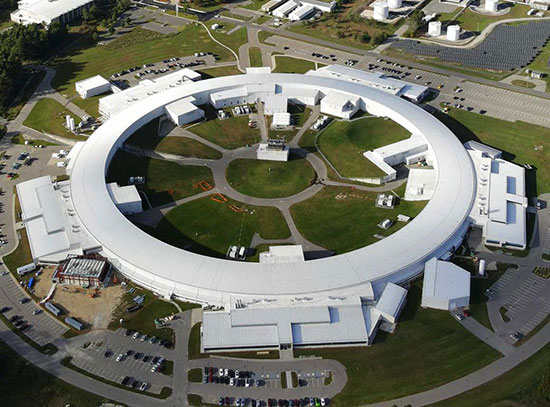
From First Light to the Future
NSLS-II reflects on the last decade and looks toward the years ahead as they celebrate 10 years since first light.
-
58:35
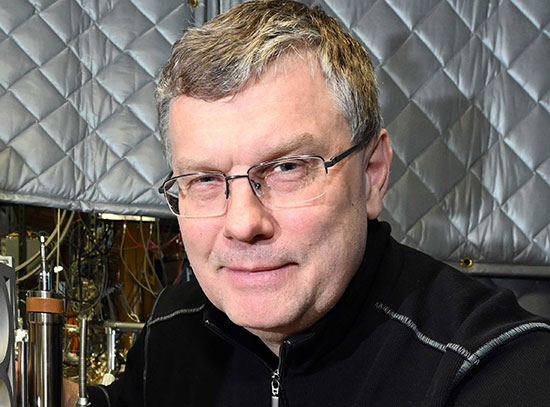
Using Slow Electrons to Investigate Surfaces and Interfaces of Two-Dimensional Materials
During the 536th Brookhaven Lecture, Jerzy "Jurek" Sadowski introduces 2D materials and benefits they can provide. He then discusses techniques and tools used to produce and characterize 2D materials — including "slow electrons" — at the Center for Functional Nanomaterials (CFN) and National Synchrotron Light Source II (NSLS-II).
-
2:44
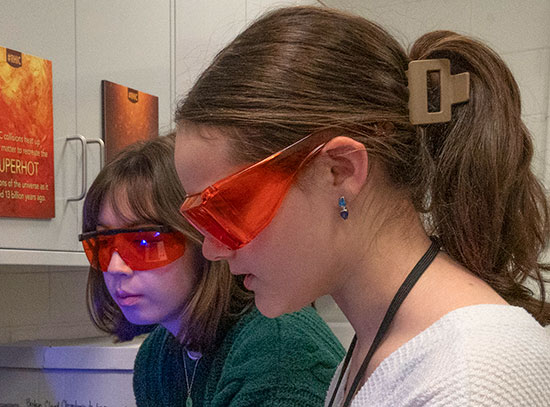
Students SPARK Local Microplastics Research
The Student Partnerships for Advanced Research and Knowledge (SPARK) program at Brookhaven National Laboratory provides an opportunity for high school students to perform authentic, hypothesis-driven research as users of the National Synchrotron Light Source II (NSLS-II) in collaboration with their teachers and Brookhaven Lab scientists. In this featured project, students from five Long Island high schools identified contaminating microplastics in local waterways with synchrotron infrared microspectroscopy. Identification of microplastic sources can help inform policies aimed at reducing or preventing plastic pollution and protect aquatic ecosystems from the potential risks microplastics pose to organisms.
-
57:23
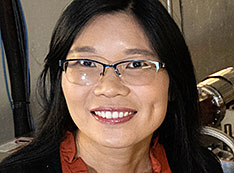
New 'Eyes' for Discovery: NSLS-II Today and Tomorrow
During the 529th Brookhaven Lecture, Guimei Wang explains how Brookhaven staff achieved unprecedented capabilities with the accelerator system at the National Synchrotron Light Source II (NSLS-II) to produce a wide range of ultrabright x-ray, ultraviolet, and infrared light for research. She then discusses upgrades planned for NSLS-II's accelerators.
-
1:20:04
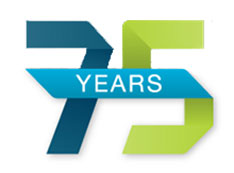
75th Anniversary Celebration, Q&A
To kick off the Brookhaven Lab's 75th anniversary year, U.S. Energy Secretary Jennifer Granholm, Lab leaders, staff, and members of the public gathered for a live, virtual event on Jan. 27. Secretary Granholm offered Brookhaven her congratulations and thanks. Then three Lab leaders shared their vision for the future of nuclear and particle physics, climate science, quantum information science, and more before taking questions from the audience.
-
1:20:03
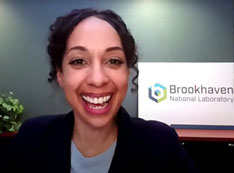
75th Anniversary Celebration, Q&A
To kick off the Brookhaven Lab's 75th anniversary year, U.S. Energy Secretary Jennifer Granholm, Lab leaders, staff, and members of the public gathered for a live, virtual event on Jan. 27. Secretary Granholm offered Brookhaven her congratulations and thanks. Then three Lab leaders shared their vision for the future of nuclear and particle physics, climate science, quantum information science, and more before taking questions from the audience.
-
59:10
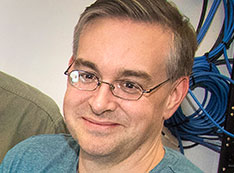
Bright Light, No Lens- X-Ray Coherent Diffractive Imaging as Microscopy
During the 522nd Brookhaven Lecture, Garth Williams describes the applicability and benefits of coherent diffractive imaging (CDI) as a research technique. He also discusses the implementation of the CDI-optimized X-ray beamline in development at National Synchrotron Light Source II.
-
1:00:03
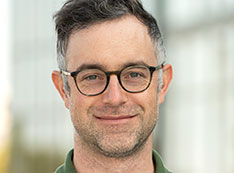
X-ray Vision of Electron Behavior in Quantum Materials
Mark Dean describes a technique, called "resonant inelastic x-ray scattering," and its uses in studying quantum materials. Dean also discusses progress researchers have made and future opportunities for better understanding quantum materials.
-
7:04
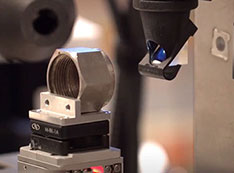
Supporting Nuclear Science with NSLS-II
Our modern world depends on safe and reliable energy. The third largest contributor to the U.S. energy market is nuclear facilities. To ensure safe and reliable operation of these facilities, it is not only essential to inspect the existing facilities but also to develop new materials to build future facilities. As a U.S. Department of Energy (DOE) Office of Science User Facility, the National Synchrotron Light Source II (NSLS-II) at DOE's Brookhaven National Laboratory supports these efforts by offering advanced research tools. By using the ultrabright x-rays at NSLS-II, researchers can study the origin and makeup of nuclear materials.
-
37:47
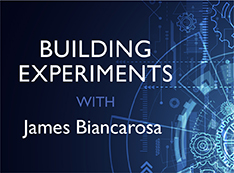
Science Thursdays: Building Experiments with James Biancarosa
James Biancarosa, a beamline technician at Brookhaven Lab, discusses the process of building scientific experiments and potential career paths for science enthusiasts in this installment of the Lab's Science Thursdays.
-
48:00
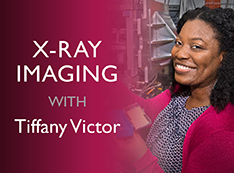
Science Thursdays: X-ray Imaging with Tiffany Victor
Tiffany Victor, a biochemist at Brookhaven Lab, discusses x-ray imaging and potential career paths for science enthusiasts in this installment of the Lab's Science Thursdays.
-
13:51
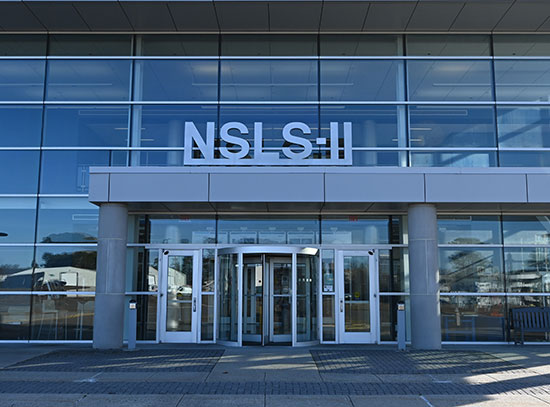
NSLS-II Virtual tour
Brookhaven Lab scientist Lisa Miller takes viewers on a virtual tour through the National Synchrotron Light Source II, a giant x-ray microscope.
-
47:22
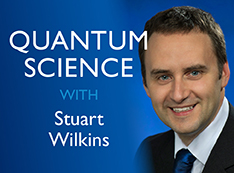
Science Thursdays with Brookhaven Lab: Quantum Science
A live virtual conversation and Q&A with Brookhaven Lab's physicist Dr. Stuart Wilkins. The discussion will include quantum science, applications, and potential career paths for science enthusiasts.
-
1:35:42

Virtual Summer Sundays: NSLS-II
Get a up-close look at the "beamlines" where scientists use ultrabright x-ray light to see the atomic structure of batteries, proteins, and more. Then, get a chance pose questions to our panel of scientists.
-
59:21
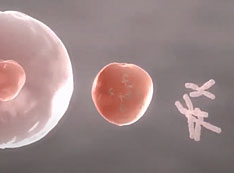
Structural Biology Behind Disease Transmission and Drug Design
Virtual panel discussion in collaboration with the Long Island STEM Hub, Brookhaven National Laboratory's (BNL) Office of Educational Programs and the Cold Spring Harbor Laboratory (CHSL) DNA Learning Center. Dr. Alexei Soares (BNL) and Dr. Jonathan Ipsaro (CSHL) discuss the importance of using structural biology techniques to study and model protein structures critical in the understanding of disease trasmission and the development of drugs to fight diseases such as COVID-19. This panel discussion complements the premiere of the Full STEM Ahead Long Island educational video.
-
1:27
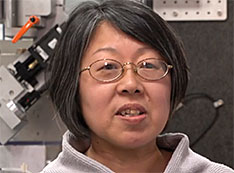
Uncovering Protein Structures to Drive Pharmaceutical Drug Discovery
The Structural Biology Program at Brookhaven Lab's National Synchrotron Light Source II (NSLS-II) enables researchers to investigate the structures of proteins using state-of-the-art x-ray scattering and diffraction techniques. Brookhaven Lab scientists describe this world-class facility and discuss how their results can be used to design novel drugs.
-
55:54
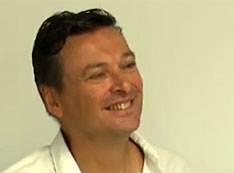
NSLS-II Seminar: X-ray Spectroscopy of Transition Metal Oxides
Frank de Groot, Utrecht University, Netherlands, presents new developments in x-ray absorption (XAS) and resonant inelastic x-ray scattering (RIXS). de Groot is professor of X-ray Spectroscopy in the Department of Chemistry at Utrecht University. His work reflects a concern with the theoretical and the experimental aspects of X-ray spectroscopy, including both fundamental studies and applications. His current interest is in the use of X-ray spectroscopies for the study of the electronic and magnetic structure of condensed matter and heterogeneous catalysts under working conditions.
-
1:03:48
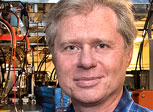
From NSLS to NSLS-II and Beyond: Accelerator Physics Challenges
Nearly a half-century ago, scientists considered the synchrotron light appearing in their electron accelerators a severe hindrance to producing the high energy particles they needed to study the fundamental forces in nature. This "nuisance" light, however, had extremely useful characteristics.
-
20:01
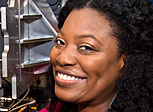
2017 Chasman Award: Tiffany Victor: Understanding the Nutrient Distribution in the Soil of Beneficial Plant-Fungi Interactions Using Infrared Imaging
Chasman Award recipient Tiffany Victor explores how to enhance the symbiotic relationship between plants and microbes and the potential to grow bio-energy crops on nutrient-poor lands.
-
49:59
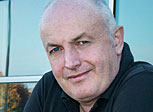
Structural Biology: Studying Living Things as They Jiggle and Wiggle
Seán McSweeney begins the 515th Brookhaven Lecture with an introduction to proteins. He then explains how x-rays from NSLS-II can provide new capabilities to study proteins—as they jiggle and wiggle—to learn more about them, including their remarkable roles in repairing damaged DNA.
-
52:13
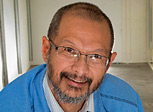
Synchrotron Science...and Bugs?
During the 509th Brookhaven Lecture, Wah-Keat Lee highlights synchrotrons' advantages over conventional x-ray sources for research, while explaining how resolution, sensitivity, and contrast affect overall capabilities. He then discusses his past research with insects.
-
56:28
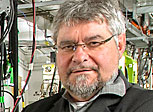
NSLS-II: The New Synchrotron Light Source at Brookhaven Lab
During the 506th Brookhaven Lecture, Ferdinand Willeke provides an overview of the National Synchrotron Light Source II and its accelerator complex. He then discusses highlights from the development and commissioning processes, the machine's current status, and an outlook for the future.
-
6:15

NSLS-II Capabilities
Brookhaven scientists discuss some of the first beamlines to host users at NSLS-II: Eric Dooryhee at the X-ray Powder Diffraction (XPD) beamline, Stuart Wilkins at the Coherent Soft X-ray (CSX) beamline, Lisa Miller at the Submicron Resolution X-ray Spectroscopy (SRX) beamline, and Yong Chu at the Hard X-ray Nanoprobe (HXN) beamline.
-
57:48
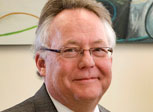
National Synchrotron Light Source II Dedication Ceremony
U.S. Department of Energy Secretary Ernest Moniz dedicated the world's most advanced light source, the National Synchrotron Light Source II (NSLS-II) at Brookhaven National Laboratory. The dedication ceremony also included remarks from U.S. Senator Charles E. Schumer, U.S. Congressman Lee Zeldin, Stony Brook University President and Brookhaven Science Associates (BSA) Co-Chair Samuel L. Stanley Jr., M.D., and Brookhaven Lab Director Doon Gibbs.
-
7:30
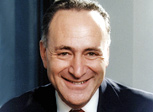
National Synchrotron Light Source II (NSLS-II) Dedication Ceremony — Senator Charles E. Schumer Comments
U.S. Department of Energy Secretary Ernest Moniz dedicated the world's most advanced light source, the National Synchrotron Light Source II (NSLS-II) at Brookhaven National Laboratory. The dedication ceremony also included remarks from U.S. Senator Charles E. Schumer, U.S. Congressman Lee Zeldin, Stony Brook University President and Brookhaven Science Associates (BSA) Co-Chair Samuel L. Stanley Jr., M.D., and Brookhaven Lab Director Doon Gibbs.
-
1:00:17
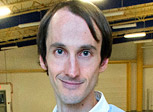
Negative Particles for Positive Breakthroughs: Characterizing Electrons in Novel Materials at NSLS-II
During the 501st Brookhaven Lecture, Ignace Jarrige explains how electrons behave and affect unique materials' properties. He then discusses how the Soft Inelastic X-ray Scattering beamline being built at the National Synchrotron Light Source II (NSLS-II) will provide unprecedented accuracy for future research.
-
1:52
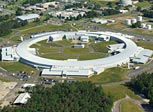
NSLS-II Achieves First Light
The National Synchrotron Light Source II detects its first photons, beginning a new phase of the facility's operations. Scientific experiments at NSLS-II are expected to begin before the end of 2014.
-
57:14

A Fast, Versatile Nanoprobe for Complex Materials: The Sub-micron Resolution X-ray Spectroscopy Beamline at NSLS-II
During the 491st Brookhaven Lecture, Juergen Thieme explained benefits of spectroscopy and more intense x-rays at NSLS-II for next-generation research. Specifically, he discussed the new sub-micron-resolution x-ray spectroscopy (SRX) beamline—highlighting its speed, adjustability, and versatility.
-
3:19

A Look Inside: NSLS-II Storage Ring
Look inside the storage ring of the National Synchrotron Light Source II, under construction at Brookhaven Lab. Exactly 843 magnets now encircle the ring. Their job will be to steer, stabilize, and store electrons racing around at near light speed.
-
5:47

Summer Sundays | Brilliant Light, Dazzling Discoveries
Brookhaven National Lab opens its doors to kids as thy put on a display of Brilliant Light and Dazzling Discoveries. Featured Interviews: Nora Detweiler, Juergen Thieme, Bill Leonhardt, Paul Gelfand, Lisa Miller, and Karen Chen-Wiegart.
-
1:09:04

The Hard X-ray Nanoprobe at NSLS-II: A Big Microscope to Tackle Challenges at the Nanoscale
In the 486th Brookhaven Lecture, Yong Chu illustrates unique challenges and innovative approaches for x-ray microscopy at the nanoscale — measured in billionths of a meter. He also discusses measurement capabilities for the first science experiments at NSLS-II.
-
2:21

Magnet Girder Assembly and Installation
It takes teamwork to assemble and install magnet girders for the storage ring of the National Synchrotron Light Source II. NSLS-II is now under construction at Brookhaven Lab.
-
1:01:13

Coherent X-ray Scattering: Dynamics of Crowded Colloids and Other Stories
In the 483rd Brookhaven Lecture, Andrei Fluerasu discusses how techniques called coherent x-ray scattering and x-ray photon correlation spectroscopy, and the future National Synchrotron Light Source II will provide unprecedented capabilities for studying the structure and dynamics of complex materials.
-
56:57

Diamond, An X-ray's Best Friend
John Smedley gives the 482nd Brookhaven Lecture, titled, "Diamond, An X-ray's Best Friend." He discusses his work as a member of a team in the Instrumentation Division that found that diamonds fit the bill for new components in cutting-edge tools being designed for upgrades for the Relativistic Heavy Ion Collider (RHIC), future linear-accelerator light sources, the National Synchrotron Light Source (NSLS), and NSLS-II — facilities that researchers from around the world are using to understand more about how the natural world works and how we can solve the nation's energy challenges, too.
-
2:49

Growing Cutting-edge X-ray Optics
Ever imagined that an Xbox controller could help open a window into a world spanning just one billionth of a meter? Brookhaven Lab’s Ray Conley grows cutting-edge optics called multilayer Laue lenses (MLL) one atomic layer at a time to focus high-energy x-rays to within a single nanometer. To achieve this focusing feat, Ray uses a massive, custom-built atomic deposition device, an array of computers, and a trusty Xbox controller. These lenses will be deployed at the Lab's National Synchrotron Light Source II, due to begin shining super-bright light on pressing scientific puzzles in 2015.
-
1:00:56

A New Spin on Magnets: Using X-Rays to Explore Novel Magnetic Materials
In the 478th Brookhaven Lecture DarÃo Arena explains the fundamentals of magnetic materials — including a concept called angular momentum, which can be illustrated by a balancing gyroscope — as well as researchers' tools and techniques for investigating these materials at BNL's National Synchrotron Light Source (NSLS).
-
1:00:30

Designing Nanoscale Systems Using DNA-Based Approaches
In the 474th Brookhaven Lecture Oleg Gang discusses how Brookhaven scientists have devised a way of using strands of synthetic DNA attached to the surface of nanoparticles to instruct them to self-assemble into nanoscale structures, clusters, and three-dimensional organizations.
-
59:44

Ancient Materials and Artworks Illuminated By Synchrotron Light
Eric Dooryhee explains that a synchrotron is an exceptionally powerful source of light (from x-rays to infrared), which permits fast, sensitive experiments to be done without damage on minute samples of objects, using a range of analytical techniques and allowing measurements to be made below the surface.
-
1:53

First Magnet Girder Installed in NSLS-II Storage Ring
Frank Lincoln explains how the first magnet girder is installed in the storage ring of Brookhaven National Laboratory's National Synchrotron Light Source II (NSLS-II).
-
1:04

Concrete Pour in NSLS-II Ring
The mezzanine floor of the ring building tunnel for NSLS-II was completed when the last concrete was placed in February 2011.
-
2:21

On Top of the Ring
Roof work continues on top of the ring building for the National Synchrotron Light Source II.
-
4:21

NSLS-II: Completion of the Ring Structure
At Brookhaven National Laboratory on October 13, 2010, construction workers, Brookhaven and Department of Energy officials, invited guests, and Lab staff signed the final beam to close the ring building of the National Synchrotron Light Source II (NSLS-II), under construction since 2009.
-
:52

High-Density Concrete Used in NSLS-II Construction
When the NSLS-II is running, electrons traveling at nearly the speed of light and forced by magnets around a circular storage ring will produce energy in the form of light known as synchrotron radiation. Lead and concrete shielding around the injector and storage rings and along the beamlines will provide protection against these photons and neutrons, and radiation exposure to personnel working on the NSLS-II floor will be quite low. In this video, BNLs lead structural engineer Tom Joos describes how higher-density concrete can be used where shielding is particularly necessary.
-
6:03

Recovery Act Progress at Brookhaven Lab
The U.S. Department of Energys Brookhaven National Laboratory is receiving $260.9 million in new science funding from President Obamas American Recovery and Reinvestment Act, principally to accelerate construction of the National Synchrotron Light Source II (NSLS-II), a new $912-million project that began construction in 2009. The funds are part of $1.2 billion announced by Secretary of Energy Steven Chu from funding allocated under the Recovery Act to DOEs Office of Science. The funds will support an array of Office of Science-sponsored construction, laboratory infrastructure, and research projects across the nation.
-
1:07

First Structural Steel Erected at NSLS-II
Ten steel columns were incorporated into the ever-growing framework for the National Synchrotron Light Source II last week, the first structural steel erected for the future 400,000-square-foot facility.
-
1:15

First Concrete Pour for Floor of NSLS-II Energy Storage Ring
No description available.
-
1:00

Another First at NSLS-II Construction Site
Workers at the NSLS-II ring building construction site recently completed the first complicated concrete pour for the approximately 19-ft.-tall walls of the Utility Tunnel. The continuous pour was the first of its kind, as previous pours have been for footings and the foundations of footings. The construction team has estimated the entire project will use 40,000 cubic yards of concrete. To date, they have used 1,000 cubic yards, leaving 39,000 cubic yards of concrete to go!
-
6:35

First Major Milestone Achieved for Brookhaven's NSLS-II
After recent road testing, NSLS- II magnets hold high-precision alignment, marking first major R&D achievement for BNLs newest accelerator.
-
1:14

First Concrete Poured for NSLS-II Ring Building
The first bits of the National Synchrotron Light Source II (NSLS-II) ring building are now taking shape after the concrete-pouring process for the new, world-class facility began on Monday, July 20. Once complete, the 400,000 square-foot building will house the accelerator ring, the largest component of the machine.
-
9:12

Celebration In Honor of the Start of Construction for NSLS-II
In honor of the start of construction for NSLS-II, members of the Center for Dance, Movement and Somatic Learning at Stony Brook University performed a special interpretive dance titled Time and Space for Celebration.
-
7:36

Construction Begins on World-Class Light Source at BNL
Brookhaven Lab announces that it is beginning construction of the conventional facilities at the National Synchrotron Light Source II (NSLS-II), a project that will advance energy research for the nation and create hundreds of jobs for Long Island over the next several years.
-
8:13

National Synchrotron Light Source II
The National Synchrotron Light Source II (NSLS-II) at the U.S. Department of Energy's Brookhaven National Laboratory is a proposed new state-of-the-art medium energy storage ring designed to deliver world-leading brightness and flux with top-off operation for constant output. The facility will be able to produce x-rays up to 10,000 times brighter than those produced at the existing NSLS. Design and engineering of the new light source began in 2007 and construction and operations are expected to being in 2009 and 2015, respectively.
About the NSLS-II
The National Synchrotron Light Source II (NSLS-II) is a user research facility, funded by the Department of Energy Office of Science. The facility supports a large community of scientists using photons (light) to carry out research in energy and environmental sciences, physics, materials science, chemistry, biology and medicine.




